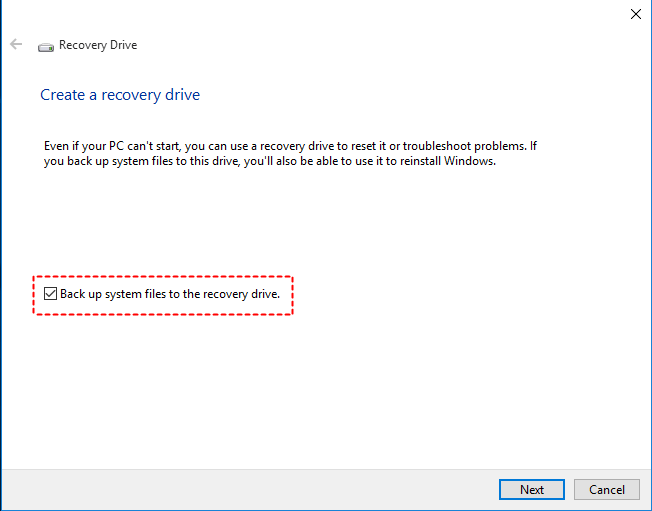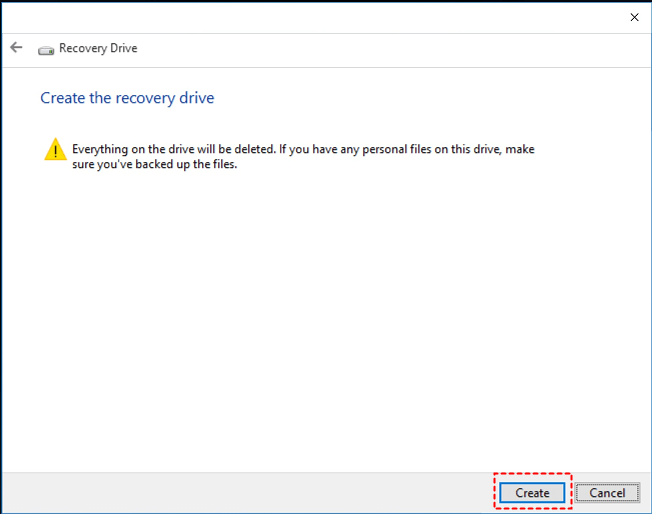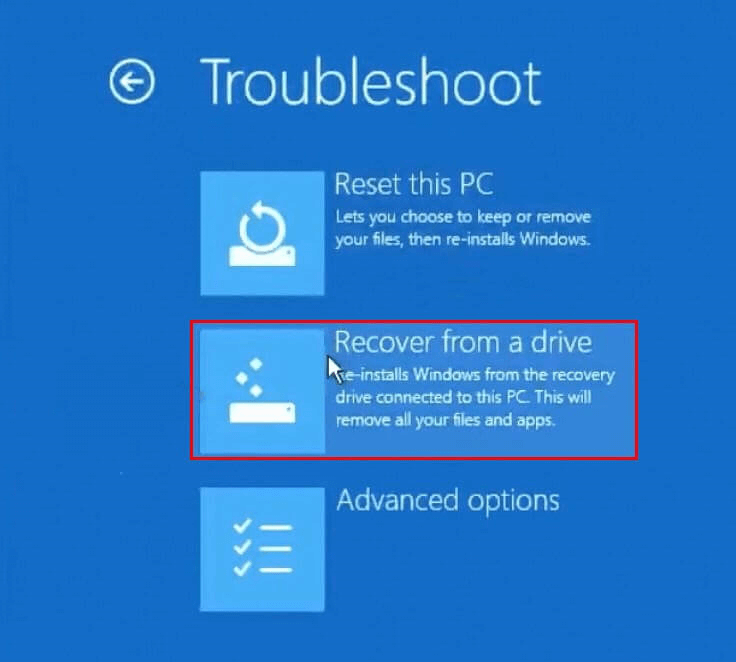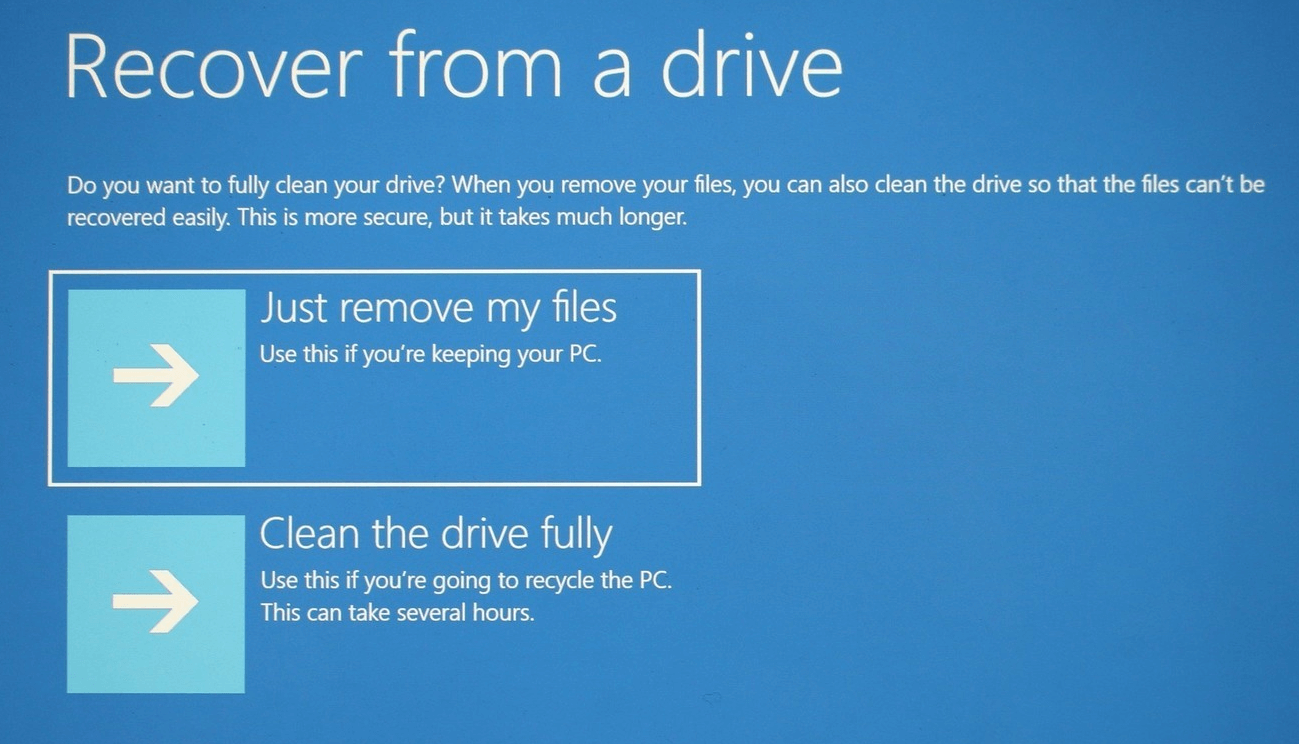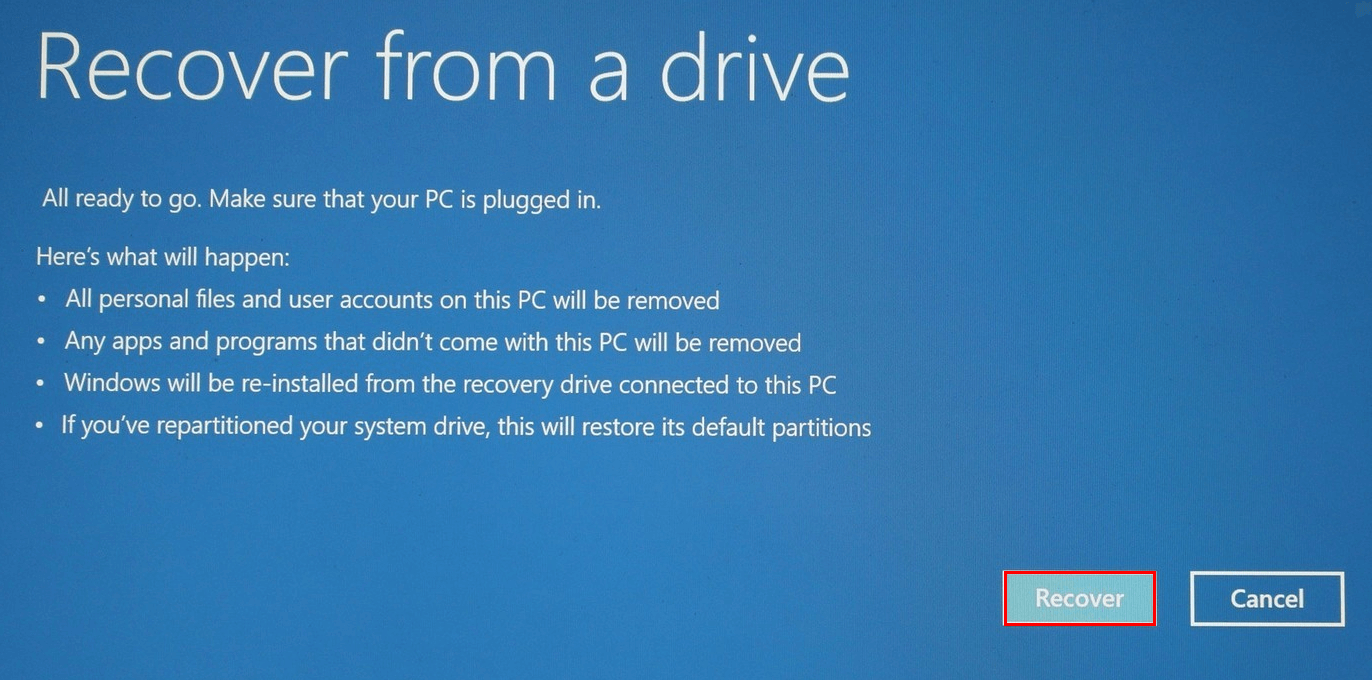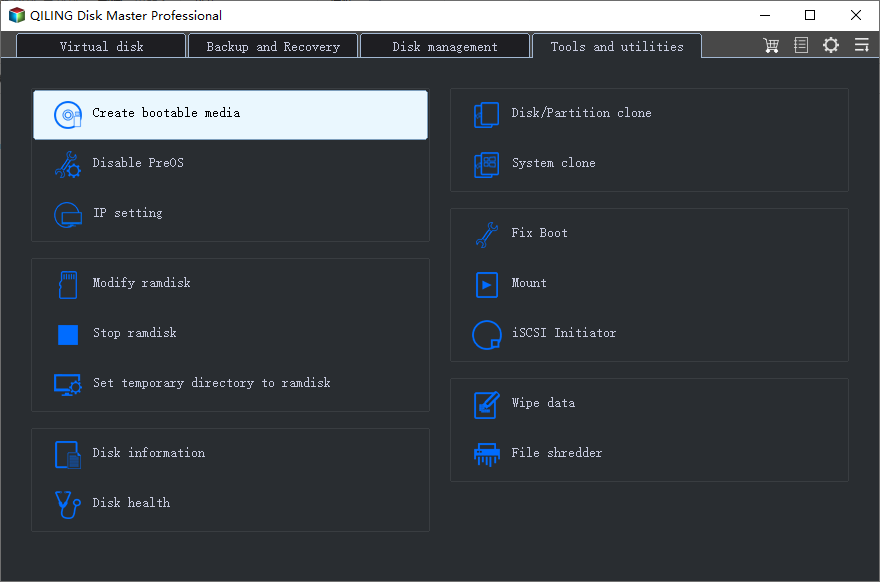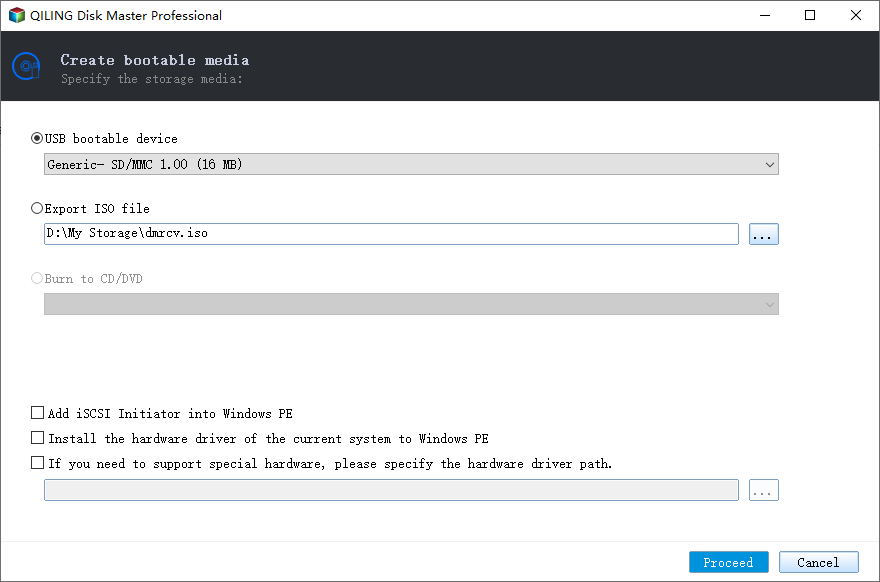How to Create Windows Recovery Environment USB | 2 Ways
Quick Navigation:
- Why do you need Windows Recovery Environment USB?
- How to use Windows Recovery Environment USB in Windows 10
- An easier way to create Windows recovery USB
- Wrapping things up
Why do you need Windows Recovery Environment USB?
Windows Recovery Environment (WinRE) is a recovery environment that can repair common causes of unbootable operating systems. Generally, if Windows fails to start normally twice in a row, it will automatically enter WinRE on the third restart and load the advanced startup options.
If Windows can’t bring up the recovery options automatically, a Windows Recovery Environment USB is needed. With a Windows recovery USB, you can:
- Install or reinstall Windows.
- Recover Windows from a serious error with the tools it offers, such as Startup Repair, System Restore, etc.
Now you know the usage of Windows recovery USB. Then, how to use it exactly?
How to use Windows Recovery Environment USB in Windows 10
First, you should create Windows 10 repair USB. Then, you can use it to reinstall or recover Windows.
Create Windows 10 repair USB
Fortunately, Windows 10 has a built-in feature to create Windows Recovery Environment USB. Bear in mind that the USB drive will be overwritten during the process, so backup files on the USB drive before you start. Then, follow the instructions below:
1. Connect the USB drive to your computer. Type “recovery drive” in the search box and select Create a recovery drive from the listed results.
2. In the pop-out window, check the option Back up system files to the recovery drive and hit Next.
Note: The "Back up system files to the recovery drive" option gives you a chance to reinstall Windows 10 when you cannot troubleshoot your computer with other recovery tools, such as System Restore, Startup Repair, Command Prompt, etc.
3. Select the USB flash drive you have connected, and click Next to continue.
Tips: The USB drive should be as large as the capacity shown in the prompt. Here it should be at least 8 GB.
4. On the next screen, click Create to begin creating the recovery drive.
5. Click Finish when the recovery drive is ready. Safely disconnect your USB drive.
Note: If you are running Windows 7, learn how to create Windows 7 recovery environment USB here.
Recover from Windows 10 recovery USB
When a serious error occurs, you can reinstall or recover Windows 10 from the recovery drive. If you choose to reinstall Windows 10, all your files and apps will be removed. So do backup your important files elsewhere before reinstallation. Learn how to reinstall Windows 10 using Windows Recovery Environment USB thereinafter:
1. Insert Windows 10 recovery USB you have created and boot your computer from it.
2. Choose your keyboard layout.
3. Select Troubleshoot > Recover from a drive successively. Things will now start getting ready.
Tips: If you didn’t check Back up system files to the recovery drive when you created your recovery drive, Reset this PC and Recover from a drive won’t be available.
4. Click on either Just remove my files or Clean the drive fully for how you want to clean your drive.
Tips: The first option performs a quick format, thus taking less time. The second option performs a secure erase so that your files can’t be easily recovered.
5. Click on Recover to begin. This will take a while to finish, and your PC will restart a few times during the process.
6. When finished, setup Windows 10 from scratch.
Note: If you want to recover Windows 10 instead of reinstalling it, you can go to Troubleshoot > Advanced options in Step 3 and use the recovery options offered there.
An easier way to create Windows recovery USB
In addition to Windows built-in feature, you can create Windows recovery USB via a handy freeware—Qiling Disk Master Standard. It enables you to make a bootable USB drive in all Windows PC operating systems including Windows 11/10/8.1/8/7/Vista/XP.
There are two kinds of bootable disc supported: Linux boot disc and Windows PE boot disc. Besides USB drives, you can also create bootable media with CDs. Now follow the steps below to create Windows Recovery Environment USB via Qiling Disk Master:
Step 1. Connect a USB drive to your computer. Download, install and launch Qiling Disk Master. Click "Tools" and select “Create Bootable Media”.
Step 2. Select “USB Boot Device” and click “Proceed”. You will receive a prompt to format your USB drive. Click “Yes” to Proceed bootable media.
Note: You should also perform system backup regularly so that you can restore system from the Windows recovery USB when serious problems occur.
Wrapping things up
This page provides a complete guide to Windows Recovery Environment USB including the usage, creation and recovery process of it. Qiling Disk Master Standard supports creating bootable USB drives on all Windows PC operating systems. If you want to create bootable USB for Server 2019/2016/2012, etc., you may pick Qiling Disk Master Server.
Related Articles
- Create Windows 10 Recovery Disk for System Repair or Reset
- Restore Windows 10 from Recovery USB (4 Ways included)
- 3 Ways to Fix Windows Could Not Find Recovery Environment
- How to Make Partition Bootable in Windows 7 Effortlessly
To start a system normally, you should first make the relevant partition bootable. This article provides three methods to make partition bootable in Windows 7.
